Island
TIME : 2016/2/19 17:27:11
You don't always need suitcases full of cash to enjoy the Caribbean Sea – cradled in its western corner lie a number of idyllic island groups that are surprisingly easy on the pocket.
San Blas Islands, Panama
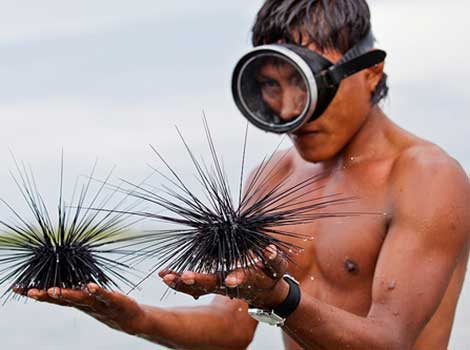
Scattered off the remote southeastern coast of Panama, the refreshingly undeveloped San Blas Islands are the ultimate castaway fantasy. The stunning archipelago is technically part of Panama, yet indigenous Kuna Indians have had autonomous control since the 1920s and day-to-day life here is gloriously uncomplicated.
-
Get there: Most visitors access the islands on a budget yacht tour from Panama to Colombia (or vice versa) as a scenic alternative to flying (there’s no road linking the two nations), but it’s also possible to organise a round trip to the San Blas departing from Panama City.
-
Stay: The bulk of visitors lodge on yachts, but there are a smattering of rustic guesthouses across the 365 islands, many of which can be booked through Luna’s Castle Hostel in Panama City.
-
Do: Wander around the palm-fringed islands and bask on their white-sand beaches – just don’t help yourself to coconuts: they are basically a form of Kuna currency and command a fee of $1. There’s good snorkelling, especially at a shallow wreck off Dog Island, but diving is prohibited in the San Blas Indian Reservation.
Bocas del Toro, Panama
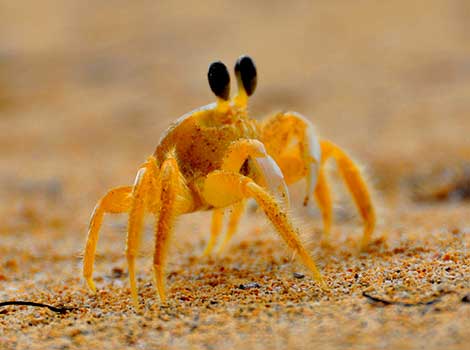
Swathed in dense jungle and fringed by coral reefs, this island chain is more developed than San Blas, but has been lucky enough to retain much of its natural beauty. Even the main island Cólon has a relaxed Caribbean vibe, and you’re bound to see at least one sloth hanging out on Bastimentos, which is surrounded by Panama’s oldest marine park.
-
Get there: Just 32km south of the Costa Rican border, ‘Bocas’ is serviced by speedboats from Panamanian mainland towns Almirante and Changuinola. There’s also a small airport on Cólon.
-
Stay: Party-ready Colón boasts a number of hotels and hostels (try www.facebook.com/HostelHeike), but those looking to get away from it all may be better suited to a guesthouse on neighbouring Carenero Cay, Bastimentos, or one of the many private island resorts.
-
Do: Snorkelling tours offered by local boatmen are well worthwhile, and there’s some good surf around these parts. Given the archipelago’s proximity to mainland river mouths, the visibility is not always conducive to scuba. Schedule at least one sunset drink at Barco Hundido (Shipwreck Bar) before it gets too rowdy – its waterfront setting is quite spectacular.
Bay Islands, Honduras
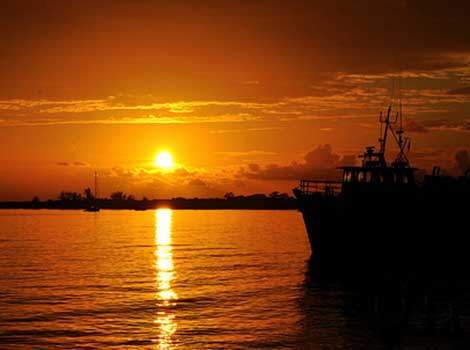
Just off Honduras’s north coast, divers flock to backpacker mecca Utila and slightly more upmarket Roatán for fantastic diving, with a year-round chance of spotting whale sharks. Lesser visited but arguably more beautiful is the easternmost Bay Island Guanaja, and the stunning Cochinos Cays, situated between the main Bay Islands and the mainland.
-
Get there: Ferries to Utila and Roatán leave daily from mainland port La Ceiba. It’s a short flight to Guanaja from Roatán or La Ceiba, and boat transfers to the Cochinos can be arranged through local resorts and dive centres.
-
Stay: Spartan but comfortable dive centre-run accommodation is the norm on Utila, Roatán and Guanaja. The Cochinos Cays are a little more limited, but if you’re after a little luxury, opt for Turtle Bay Eco Resort (turtlebayecoresort.com).
-
Do: If you’re not a certified diver, Utila is one of the cheapest places on earth to do your open water course, though the diving on Roatán and the Cochinos is more diverse. There’s great snorkelling off all the islands, and happening nightlife on Utila and Roatán. Pack insect repellent – sand flies can be a problem on the beaches.
Corn Islands, Nicaragua
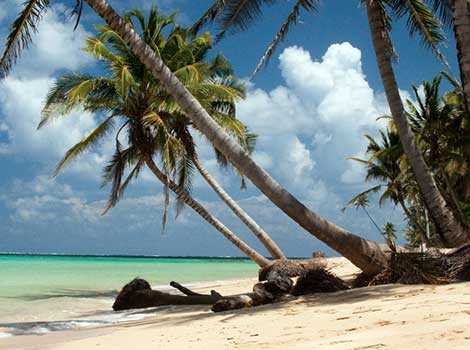
Some 70km from the mainland, the two Corn Islands – Big Corn and Little Corn – feel a world away from Nicaragua’s muddy Caribbean coastline. Colonised by the British, the vibe is more Caribbean than Latin, and no one is ever in a rush. North of here lie the seldom-visited Miskito Cays and to the east you’ll hit San Andrés Island, which is actually part of Colombia.
-
Get there: While it’s possible to take a twice-weekly boat to Big Corn from the remote mainland town of Bluefields, it’s much easier to opt for the 1.5-hr flight from the capital Managua. Take a taxi to the dock, where a boat timed to meet the plane ferries passengers to Little Corn (around 45mins).
-
Stay: Smaller and more scenic than its neighbour, Little Corn is the place to bunk down. The most idyllic lodgings are scattered along the eastern shore, ranging from simple shacks like Elsa’s to more comfortable digs like Little Corn Beach and Bungalow (littlecornbb.com). Little Corn’s first luxury resort, Yemaya (littlecornhotel.com), recently opened on the north coast.
-
Do: There’s great diving and snorkelling, and you won’t return from a fishing trip empty handed. There’s not much else to do but swing in a hammock and gorge on fresh seafood, which suits most visitors just fine.
Belize’s cayes
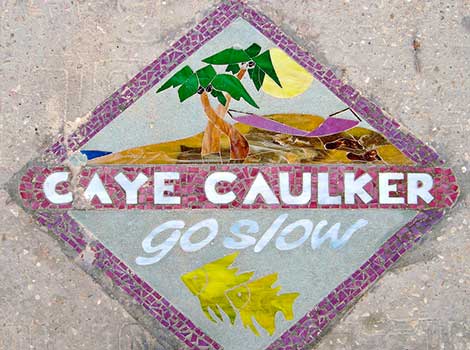
Studded with palm trees that sway in the Trade Winds, iridescent water lapping at their white sand beaches, Belize’s 200+ cayes are postcard-perfect stuff. Many are privately owned, while others remain blissfully untouched. The two most accessible and developed are low-key Caye Caulker and more upmarket Ambergris Caye.
-
Get there: Two water taxi companies connect Belize City with Caye Caulker (45mins) then on to Ambergris Caye (additional 25mins) with around 10 daily departures between them. There are also two daily services to and from the cayes from Chetumal, Mexico.
-
Stay: Easily the more scenic of the two main cayes, tiny Caye Caulker (motto: go slow) has a good range of basic but comfortable guesthouse accommodation. With its own private dock, Yuma’s House (yumashousebelize.com) is a backpacker favourite, while Seaside Cabanas offer a little more luxury.
-
Do: The diving in Belize is arguably the best in the Caribbean and if you’re advanced, a three-dive trip to the famous Blue Hole and Lighthouse Reef is not to be missed. There’s also great snorkelling (perennially popular Ragamuffin Tours [ragamuffintours.com] offer single and multi-day trips from Caye Caulker), fantastic seafood (June 15 to February 14 is lobster season) and some great little beach bars.




